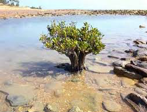Fri 10 Apr 2020 02.40 AEST

The environmental changes wrought by the coronavirus were first visible from space. Then, as the disease and the lockdown spread, they could be sensed in the sky above our heads, the air in our lungs and even the ground beneath our feet.
While the human toll mounted horrendously from a single case in Wuhan to a global pandemic that has so far killed more than 88,000 people, nature, it seemed, was increasingly able to breathe more easily.
As motorways cleared and factories closed, dirty brown pollution belts shrunk over cities and industrial centres in country after country within days of lockdown. First China, then Italy, now the UK, Germany and dozens of other countries are experiencing temporary falls in carbon dioxide and nitrogen dioxide of as much as 40%, greatly improving air quality and reducing the risks of asthma, heart attacks and lung disease
For many experts, it is a glimpse of what the world might look like without fossil fuels. But hopes that humanity could emerge from this horror into a healthier, cleaner world will depend not on the short-term impact of the virus, but on the long-term political decisions made about what follows.


